Water Rhythm Jiangsu, a Red Journey| Keep in mind history and pay tribute to the motherland
Walking in Jiangsu, the beautiful scenery of water
You were born a hundred years ago in stormy storms
丨ˇ Never be afraid of the surging waves coming on you
ˇI am bathed in the warm sunshine of the new era
Never forget you with vague memories
On the occasion of the centenary of the founding of the Party, I went to Jiangsu, which I had longed for a long time, to find those red tourist attractions. From Nanjing to Yangzhou and then to Huai 'an, I went sightseeing and enjoyed the scenery all the way, learned about the revolutionary history, increased knowledge of the revolutionary struggle, and learned the spirit of the revolutionary struggle. I was filled with emotion!
Recommended attractions and routes: Nanjing Confucius Temple Scenic Area-Sun Yat-sen Mausoleum-Yuhuatai-Nanjing Massacre Victims Memorial Hall-Zhu Ziqing's Former Residence-Gaoyou Memorial Hall of the Last Battle of the Anti-Japanese War-Zhou Enlai's Hometown Tourist Attraction

Pursuing red footprints in Nanjing

Nanjing Confucius Temple
Nanjing, a beautiful place in Jiangnan, the Imperial State of Jinling ", has a long history and has countless beautiful scenery and cultural relics. Enjoy the brilliance of the Qinhuai River and shuttle through the prosperity of modern classics. On the occasion of the centenary of the founding of the Party, we will have a red tour in Nanjing, the ancient capital of the Six Dynasties!





Recommended attractions:
Jing[Nanjing Confucius Temple] is located in the core area of the Confucius Temple Qinhuai River Scenic Belt. It is one of the four major Confucian temples in China. It consists of Confucius Temple, Xuegong Palace, and Gongyuan. It is the largest traditional ancient market in China.
Nanjing Confucius Temple is located on Gongyuan Street on the north bank of the Qinhuai River in Qinhuai District, Nanjing and west of Jiangnan Gongyuan. It is located in the core area of the Confucius Temple Qinhuai Scenic Belt, namely Nanjing Confucius Temple, Nanjing Confucian Temple, and Wenxuan King Temple. It is the place where Confucius is worshipped and worshipped. It is the first national highest institution of learning in China and one of China's four major Confucian temples. It is the hub of ancient Chinese culture and a place where Jinling's historical and cultural heritage gather. It is not only Nanjing's cultural and educational center during the Ming and Qing Dynasties, but also a cultural and educational building complex ranked first among the southeastern provinces.





🌟Wuyi Alley is located in the southwest of Confucius Temple. It was originally the residence of Xie An, the famous minister of the Eastern Jin Dynasty. It has been a thousand-year-old ancient well, and the reconstructed streets and alleys still retain the simplicity and elegance of the year.
The popular poem "Wuyi Alley" by Liu Yuxi, the great poet of the Tang Dynasty, shows weeds and flowers beside the Suzaku Bridge, and the sunset at the entrance of Wuyi Alley. In the old days, Wang Xie Tang and Yan flew into the homes of ordinary people. It's just a sigh for this place. The ancient well in Wuyi Lane is called Wuyi Well. It is said that it was dug in Wu to provide drinking water for the garrison here.


🌟[Jiangnan Gongyuan] This is the largest imperial examination room in China, and there is also a Chinese imperial examination museum. The most talked about the imperial examination culture here is that they come here to seek the best prize of being the top scorer in high school!

The banks of the Qinhuai River also flourished for a time due to the existence of Gongyuan and Confucius Temple. In its heyday, there were 20644 examination halls alone, plus hundreds of official rooms, dining rooms, warehouses, and miscellaneous soldier rooms, covering an area of more than 300,000 square meters. Its scale and area are the highest among the tribute halls in all provinces across the country, creating the largest in ancient imperial examinations in China.



🌟[Confucius Temple Food Street] This is a gathering place for local delicacies. Don't miss it for those who like snacks!
Confucius Temple Food Street was built in 1997 with a total investment of 150 million yuan. It is located at the southern end of Confucius Temple. It starts from Pingjiangfu Road in the east and ends at Laiyan Road in the west. Along the street are a number of well-known catering and entertainment companies such as Wanqing Flavor Pavilion, Wanqing Tea Pavilion, Jinling Spring Restaurant, Confucius Temple Kangle City, Qinhuai Renjia, and Bailu Hotel. There are many choices!




Qian[Former Residence of Li Xiangjun] One of the "Eight Beauties of Qinhuai" lived in Meixiang Building near Laiyan Bridge. She was unyielding and had noble patriotic sentiments.
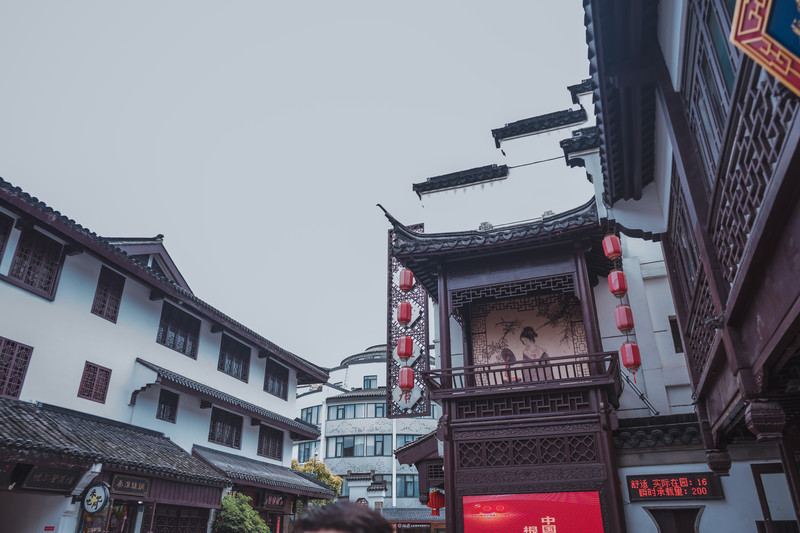
Li Xiangjun's former residence is located at No. 38 Chaoku Street, Qinhuai District, Nanjing. It is located in the core area of the Qinhuai Scenic Belt of Confucius Temple. It is also known as Meixiang Tower. It is a one-to-two-storey brick and wood structure dwelling on the Qinhuai River. It is a three-entry-two-house-style Ming and Qing River house building, which comprehensively shows the scene of Li Xiangjun's life at that time and is a cultural relic protection unit in Nanjing City. In order to commemorate this patriotic celebrity in ancient my country, she praised her character and national integrity of "unyielding courage, unyielding poverty and low, uncompromising wealth". The Qinhuai District Party Committee and District Government restored Li Xiangjun's former residence on the south bank of the Qinhuai River (No. 38 Chaoku Street) in Confucius Temple.

🌟[Night View of Qinhuai River] In addition to the very lively location of the Confucius Temple Wharf, there is also a private classic and super beautiful night view station on the Dongyuan Bridge. It is antique and like a dream, especially if you can take pictures of the Qinhuai River. Traveling by the painting boat, the beautiful scenery of ten miles of Qinhuai is here!📷
Smoke cage cold water cage gauze cage, night parking near Qinhuai restaurant
Nanjing's mother river, the Qinhuai River, is the cradle of Nanjing's ancient civilization. It has always been known as "the smoky and moon area of the Six Dynasties, where gold powder gathers". It is also a prosperous place for ten generations. It is known as "China's first historical and cultural famous river". During the Six Dynasties, it became a place where famous families lived. Merchants gathered, literati gathered, and Confucianism flourished. The Song Dynasty began to become the center of Jiangnan culture. The Ming and Qing Dynasties, especially the Ming Dynasty, were the heyday of the Shili Qinhuai River. At the end of the Ming and Qing Dynasties, the deeds of the eight beauties of the Qinhuai River were even more popular. There are rows of gold powder towers; painted boats dominate the waves, and the sound of oars and lights form a dreamy beautiful spectacle.



Sun Yat-sen mausoleum
The entrance to Sun Yat-sen Mausoleum is no longer like a memorial cemetery. It is surrounded by green shades and beautiful environment. It is more like a leisure park in the center of the city. Even when the museum is closed on Monday, many people still come to pay homage. This is the tomb of Dr. Sun Yat-sen, the pioneer of the great democratic revolution in modern China. The tomb covers an area of more than 80,000 square meters. Construction started in the spring of 1926 and was completed in the summer of 1929. The mausoleum buildings are symmetrically arranged on the gentle slope at the southern foot of Zhongmao Mountain according to the north-south central axis. Looking down from the sky, the Sun Yat-sen Mausoleum is like a reclining "freedom bell", meaning "Muduo warns the world".
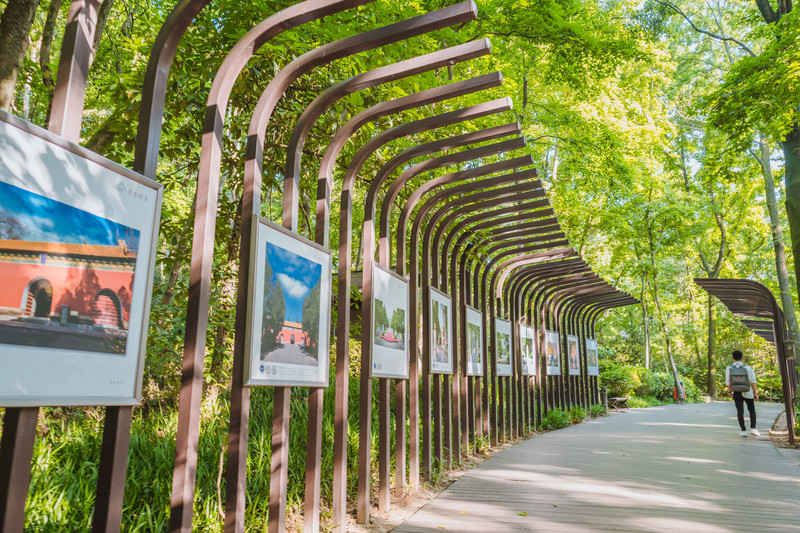
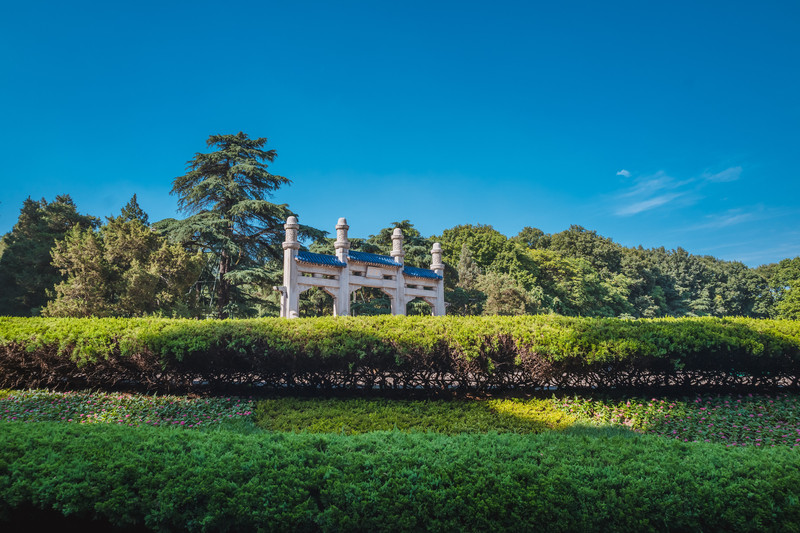

Sun Yat-sen Mausoleum was built according to the mountain. It is located in a forest, adjacent to the Ming Xiaoling Mausoleum, and gradually rises along the central axis from south to north. The main buildings include Bo 'ai Square, tomb path, tomb gate, stone steps, stele pavilions, sacrificial halls and tombs, etc., arranged on a central axis, reflecting the style of traditional Chinese architecture. When viewed from the air, it looks like a "freedom bell" lying flat on a green velvet carpet. The sacrificial hall at the highest point is the core building of the tomb. The distance from the archway to the plane is 700 meters, and the vertical drop is 73 meters. The tomb behind the memorial hall is represented by the buttons of a large clock. It means "arousing the people to build the Republic of China." The tripod of filial piety at the foot of the mountain is the spire of the bell, the half-moon square is the arc of the bell's top, and the gentle and long tomb path of the stone archway at the south entrance is like a suspension cable under the bell.


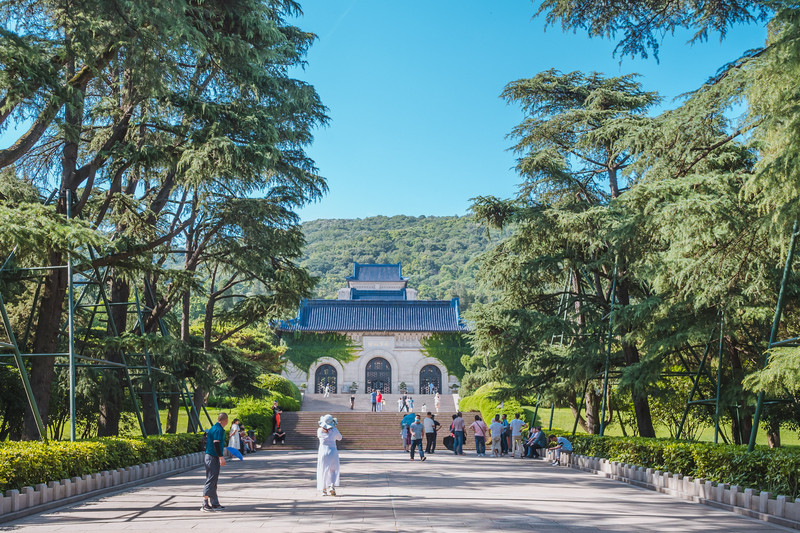
Sun Yat-sen Mausoleum Boai Fang
The Bo 'ai Square at the entrance is a place where people like to leave tourists to take group photos. The two golden characters "Bo' ai" on the cross-lintel of the stone archway are broad and generous, and the space is open, giving people endless imagination. Dr. Sun Yat-sen usually likes to write these two words as gifts to others, and Nanjing is also known as the Capital of Fraternity.

Address: Located in Zhongshan Scenic Area at the southern foot of Zijin Mountain in Xuanwu District, Nanjing City
Transportation: Take Metro Line 2 to Sun Yat-sen Mausoleum Xiamafang Station. After exiting the station, you can transfer to a scenic sightseeing bus or walk along Boai Road to Sun Yat-sen Mausoleum.
Take Nanjing Bus No. 34 or No. 201 to Sun Yat-sen Mausoleum Parking Lot Station
Tickets: Free
opening hours
08:30-17:00("The world is for the public" area above the mausoleum gate) (January 1-December 31, Tuesday-Sunday)
08:30-17:00(tomb chamber) (January 1-December 31, Tuesday-Friday)
tips:
The museum is closed for maintenance every Monday (except for statutory holidays and the anniversary of Dr. Sun Yat-sen's birth and death). Starting from New Year's Day in 2019, Sun Yat-sen Mausoleum has officially implemented "scheduled" visits and "noise-free" management. The specific scope is: Bo 'ai Square and the core areas above the mausoleum gate of "the world is for the public"(mausoleum gate, stele pavilion, memorial hall, tomb chamber).
The tomb is open from Tuesday to Friday (except statutory holidays), and is open on the anniversary of Dr. Sun Yat-sen's birth and death. You need to book the entrance time in advance to enter the mausoleum. It is recommended to book tickets more than one day in advance. You can also buy a set ticket for sightseeing. There are sightseeing buses in the scenic area.
It was a Monday when we went there, so we couldn't enter and visit it. We just visited the magnificent exterior of the Lower Sun Yat-sen Mausoleum.

Nanjing Yuhuatai Martyrs Cemetery
I knew that Yuhua Stone is a characteristic of Yuhua Terrace since I was very young, but now Yuhua Terrace has no Yuhua Stone. This is the place where the martyrs of the New Democratic Revolution died, and as many as 100,000 Communists and revolutionary people were killed here. There is now a Martyrs Cemetery, which is also a beautiful red tourist attraction. It is a good place for local citizens to relax and play. There are also many scenic spots. If you have enough time, you can visit it in detail.
There are more than 20 scenic spots and historic sites, pavilions and pavilions in Jiangsu Province, including Yuhua Pavilion, Ganlu Jing, Ganlu Jing Pavilion, Erzhong Temple, Qianlong Imperial Stele Pavilion, Li Jie Tomb, Ming Eunuch Yihui Monument, Yang Bangyi Heart-cutting Place, Fang Xiaoru Tomb, Mumo Pavilion, Xinhai Revolution Mausoleum, Muxi Garden, Yiyuan, Meigang, Yuhua Stone Museum, Jiangsu Province National Security Education Exhibition Hall.





In the square surrounded by mountains on three sides inside the gate of the scenic area stands a martyrs group sculpture. The statue is 10.3 meters high and 14.2 meters wide. It is made up of 179 pieces of granite. It is currently the largest granite group sculpture in my country. The martyr looked lifelike, and the statue used a method of virtual reality from the top to the bottom, focusing on the martyr's facial expression. Huanling Avenue on both sides leads directly to the main peak of Yuhuatai. On the main peak stands a 42.3-meter-high stone tablet. The front of the stone tablet is engraved with the seven gold characters "Monument to Revolutionary Martyrs" personally inscribed by Deng Xiaoping, and the memorial text is engraved on the back. There is also a 5.5-meter-high bronze statue of a martyr erected in front of the monument.

The Revolutionary Martyrs Memorial Hall inside is worth visiting. It contains many letters from martyrs 'families that appeared in textbooks when they were in school. Just like the "power of faith" at the entrance, the night is full of stars, the sky and the earth are bright, and the wind and rain are swaying. This is the power of faith!










Looking at these stories, tears filled his eyes, especially when Deng Zhongxia answered questions from the secret party branch in Nanjing prison: "Everyone wants to know what your political attitude is?" Deng Zhongxia immediately said: "Good question! Please tell comrades that I, Deng Zhongxia, am still a Communist even if I am burned to ashes!" It is sonorous and powerful, shocking!
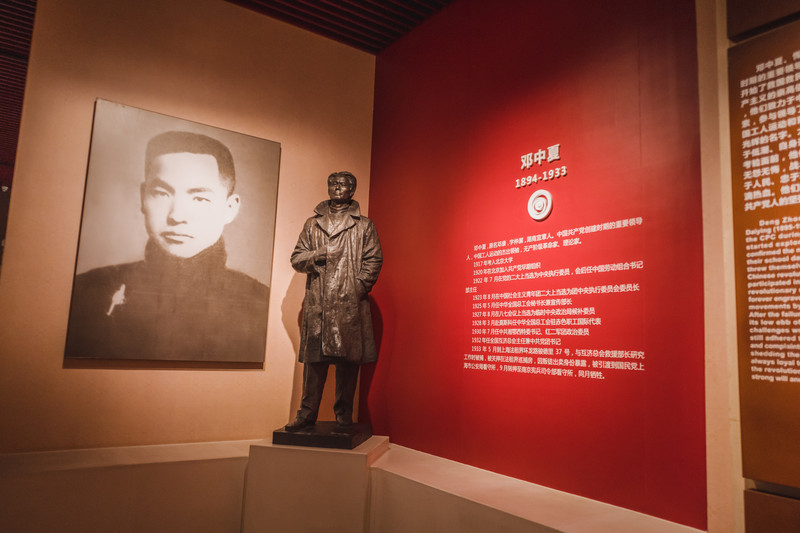
Nanjing Massacre Victims Memorial Hall
I used a white chrysanthemum to express my condolences and mourn my compatriots. During the tour, I didn't take too many photos for the first time. Every scene was a depressing and painful fact. The statue at the door was hard to bear to look closely. The tragedy reminds people not to forget history.



This is a place that everyone should visit to reshape some of our thoughts and concepts on history, war, and human nature. Behind the painful history, so many people are looking for the truth. I can't forget Vautrin opened her arms to protect women and children. During the war, she protected countless innocent women. She was the priest prototype of the movie "The Thirteen Gifts of Jinling". Because of the mental pressure in the war fields, she finally committed suicide despite depression. Before she died, she said: "If I can be reborn once, I still have to serve the Chinese people. China is my home." Her tombstone is engraved in English: Minnie Vautrin, a missionary to China. But what is engraved in the most eye-catching place are four Chinese characters-Jinling Eternal Life.

In front of this poster, I was deeply shocked by this bright girl! For a material society like the United States, it seems unbelievable for a young girl to spend several years writing a historical book, because young people have to race against time to make money and start a family. However, the girl, who was only 25 years old at the time, had an idea: "I don't care whether this book can make money. For me, I just want all people in the world to understand what happened in Nanjing in 1937." After the publication of "The Atrocities of Nanjing", she was also surprised by the enthusiastic response from American readers. She said,"Although this book is important, I thought it would only get favor from the library." But Chun Ru also believes that the truth is indestructible and everyone must work together to ensure that the truth is preserved and remembered. On November 9, 2004, Zhang Chunru also committed suicide in her car in Gailos, California due to depression. She could not face the pain and torture in her heart.

The memorial hall is divided into four functional areas: exhibition assembly area, site memorial area, peace park area and collection exchange area.
(1) Exhibition and gathering area: mainly the historical data exhibition hall and gathering square. Historical data display basic display and special display. There are themed sculptures on the assembly square-the cries of the dead souls, the monument, the wall of disaster, and the peace bell. Every year on December 13, people gather here to pay tribute to the victims, ring the peace bell, and issue a peace declaration.
(2) Ruins memorial area: The area includes large-scale composite sculptures of "The Disaster of the Ancient City","Footprints of Historical Witnesses" copper plate road,"Crazy Snow" poem stele wall, stone wall and Deng Xiaoping's handwritten museum name, cemetery square, embossed "Disaster","Massacre","Memorial Ceremony","Mother's Call" sculpture,"Mass Pit" site display and memorial square, meditation hall, etc.
(3) Peace Park Area: The area has peace as its theme and is an important place for peaceful exchanges among people from all over the world. Including the Wall of Victory, Peace Park, white marble sculpture "Peace", Purple Gold Grass Garden, Japanese Friends Planting Forest, etc.
(4) Collection exchange area: This area is a comprehensive functional area integrating collection, exchange and office work. Its main facilities include academic report halls, libraries, special collections, etc.

The atmosphere here is very heavy. People walk and watch in order. No one is laughing and joking. Everyone feels the anger and sorrow.


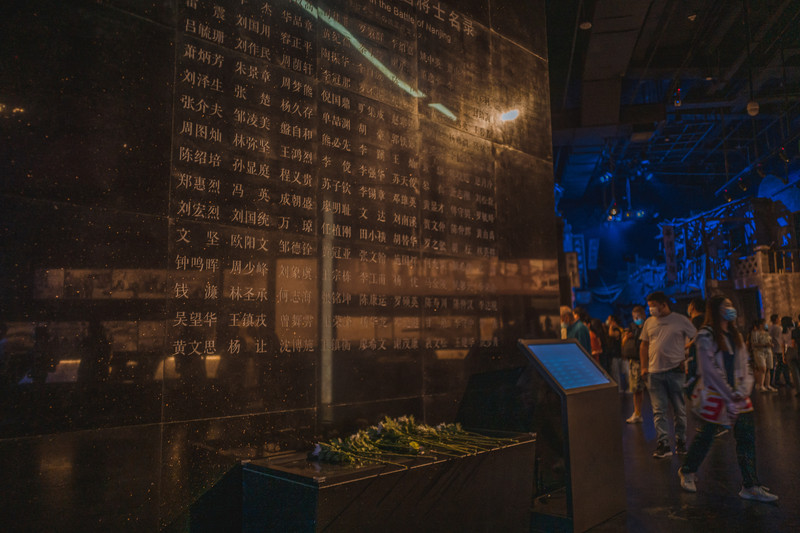
I laid flowers here on the list of soldiers in the Nanjing Defense War and bowed to pay tribute. After the visit, I looked back at the blue sky of Peace Square and was deeply shocked. This is the meaning of the red journey. Remember history, not hatred.
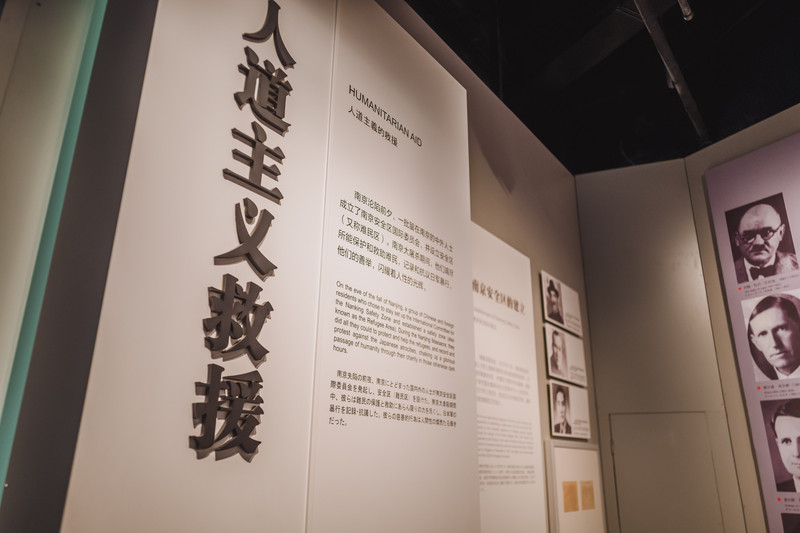
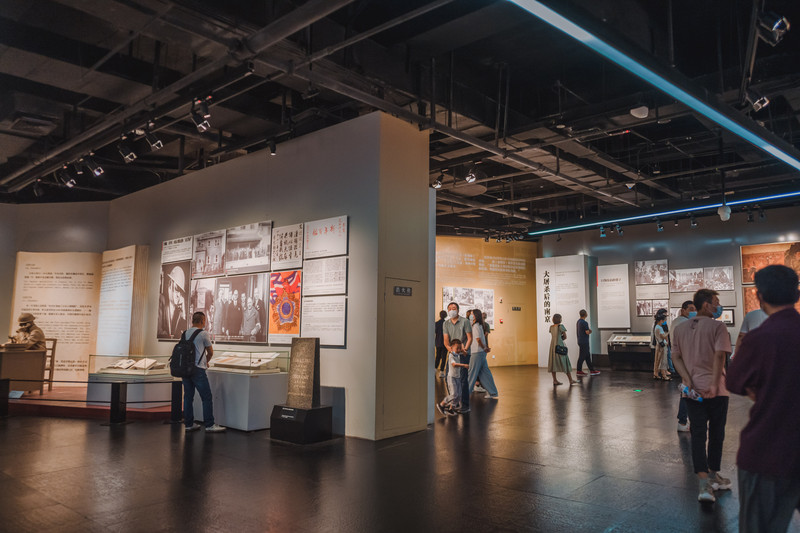



Attractions: Memorial Hall for Victims of the Nanjing Massacre by the Japanese Invaders
Address: No. 418, Shuiximen Street, Jianye District, Nanjing City
Ticket price: Free
Opening hours: 8:30-16:30, advance online reservation is required
Closing hours: Every Monday (normally open on national holidays)
Transportation: Bus: No. 7, No. 37, No. 61, No. 63 and No. 166 to the "Jiangdongmen Memorial Hall"; No. 204 to the "Memorial Hall"; No. 48 and No. 109 to the "Chating East Street". Metro: Nanjing Metro Line 2 Yunjin Road Station
Enter Yangzhou and explore Zhu Ziqing's former residence
From Nanjing to Yangzhou, we made a special trip to visit Zhu Ziqing's former residence. We walked through the alleys and found it all the way here. The school next to it is still in class. Thinking about the key, the students who live nearby must have a very interesting experience. Today, we learned the lesson written by the old man from the neighbor's house: "Above the winding lotus pond, what you look forward to is the leaves of the fields. The leaves are high out of the water, like the skirts of dancers in pavilions. Between the layers of leaves, there are scattered white flowers, some blooming gracefully, some shyly holding buds, like pearls, stars in the blue sky, or beautiful women who have just come out of the bath." Come on, let's go next door to see the sculptures in Zhu Ziqing's former residence!




Zhu Ziqing's former residence was built in the Qing Dynasty. It is located at No. 27 Anle Lane. It has three rooms and two compartments, two passenger rooms, one gate aisle, and one patio. It is a typical residential "three-way" building in Yangzhou. It is currently a national-level key cultural relics protection unit, a patriotic education base and a small citizen demonstration base, and is open to the public as a historical district scenic spot protected by a famous city.




Zhu Ziqing (1898-1948), originally known as Zihua, also known as Peixian, was born in Shaoxing, Zhejiang Province. He was born in Donghai County, Jiangsu Province. Because his grandfather and father both settled in Yangzhou, he graduated from Jiangsu Province No. 8 Middle School (now Yangzhou Middle School) in Yangzhou, and later worked as a teacher in Yangzhou, so he called himself a native of Yangzhou. "The world is three-part bright moon and night, and two-part scoundrel is Yangzhou. Zhu Ziqing had deep feelings for Yangzhou, which was also mentioned in his article. Zhu Ziqing has lived in many places across the country, and the "Zhu Ziqing Former Residence" in Yangzhou is the best preserved Zhu's former residence in the country, and the study and bedroom maintain their original appearance.
When looking at things and thinking about talents, people seem to see the "back" of the gentleman leaning on his desk and writing.




The Zhu Ziqing Memorial Hall is open for free and requires an ID card. It is open every Monday to Sunday.
Gaoyou Memorial Hall for the Last Battle of the Anti-Japanese War
Gaoyou Red Landmark| Memorial Hall for the Last Battle of the Anti-Japanese War
When I come to Gaoyou, a famous national historical and cultural city, in addition to experiencing the cultural heritage, the most worthy red landmark is the Memorial Hall of the Last Battle of the Anti-Japanese War. Coming here, I feel that the trip is worthwhile! Looking back on the century-old struggle, looking forward to the bright prospects for the future, and having great achievements in mind, it is a century-old glory.



🌟On December 19, 1945, the New Fourth Army launched the Battle of Gaoyou. In this battle, the Japanese army surrendered. The auditorium here is now the former site of the Japanese invaders surrendered to the New Fourth Army, and is a national-level anti-Japanese war site.
The wide landscape square, towering victory landmarks, and continuous rusty stone embossed walls promote the indomitable spirit of the war of resistance. At the end of the visit, there was a spontaneous sense of national pride and joy of victory!



The symbol "Victory Square, the last battle of the Anti-Japanese War" is 19.45 meters high, meaning that the Chinese nation achieved a comprehensive victory in the Anti-Japanese War in 1945.
In the outdoor part, a total of 14 sculpture units have been designed from the entrance to the exit of the corridor. There are wall embossed such as the "September 18th" Incident, the Lugouqiao Incident, and the Nanjing Massacre, symbolizing the Chinese people's transition from the "September 18th" Incident to the 14-year arduous struggle to win the Anti-Japanese War, and the "Victory Moment" of the main sculpture of Victory Square will come into view.
Inside the memorial hall, the entire process of the Battle of Gaoyou is displayed in the form of photos, objects, oil paintings, scenes, micro movies, etc.


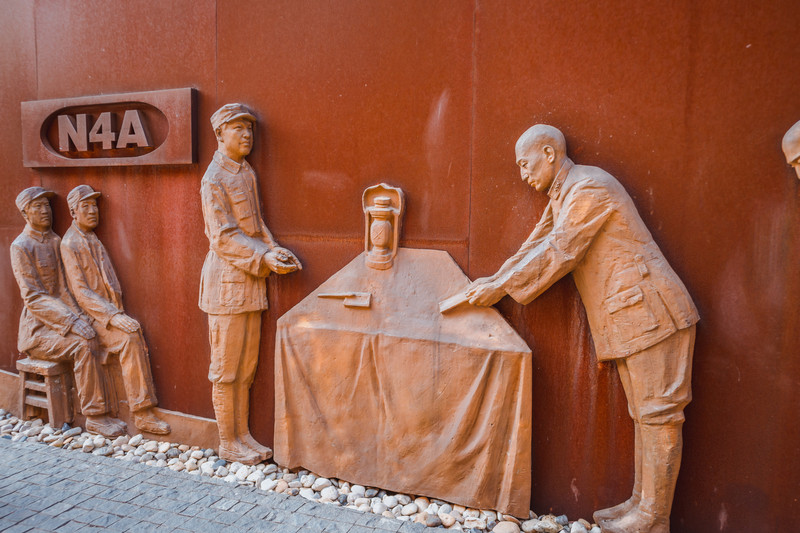





The war of war at that time created the stability of the present world, and the scenes in the memorial hall made history in the silent years seem like a new life. Our generation was lucky enough to be born in the Taiping Era, which is entirely due to the resolute resistance of the heroes of the Anti-Japanese War, regardless of casualties!


Remember history, remember the martyrs, cherish peace, and create a future
🌟Memorial Hall for the Last Battle of the Anti-Japanese War
📍No. 70, Xihe Lane, Gaoyou City, Jiangsu Province
Zhou Enlai's Hometown Tourist Attraction




The east courtyard of the former residence is the house of Zhou Enlai's grandfather, his stepmother and nursing mother, the room where Zhou Enlai was born, the reading room, the well where he used to lift water, and the vegetable field where he watered the garden. The west courtyard was originally the house of Zhou Enlai's second grandfather, and now it displays Zhou Enlai's photo materials, which are divided into five parts: Zhou Enlai's childhood, family background and hometown, people's remembrance, inscriptions, Zhou Enlai's calligraphy and painting garden, and Zhou Enlai's ink stele gallery.





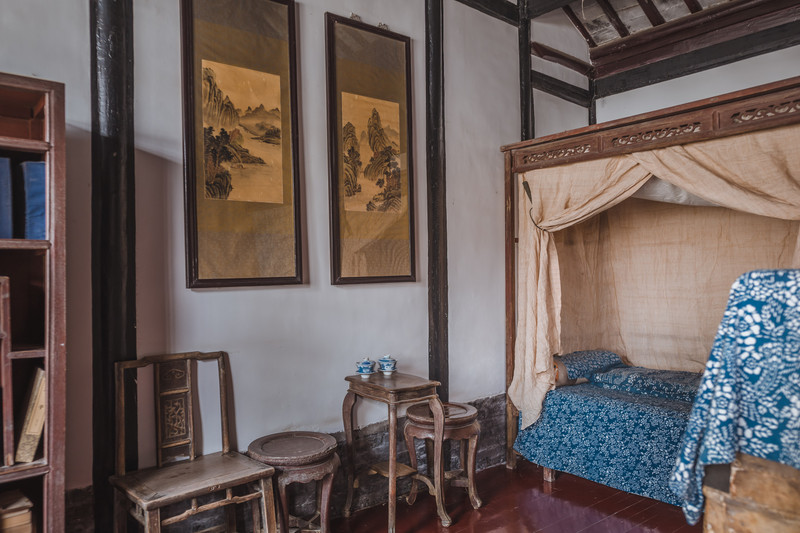
Visiting the places where Zhou Enlai once lived, including the vegetable gardens, wells, bedrooms with a strong atmosphere of life, detailed historical photos and materials, and the Deng Yingchao Memorial Garden, which show us many precious old photos to commemorate the great man of the generation!


Previous Article:Where to go to play in Jiangsu? Wanwei Yangzhou City
Next Article:[Yangzhou Garden--He Garden] Nostalgic outing, one-day trip to charming classical gardens (2)
